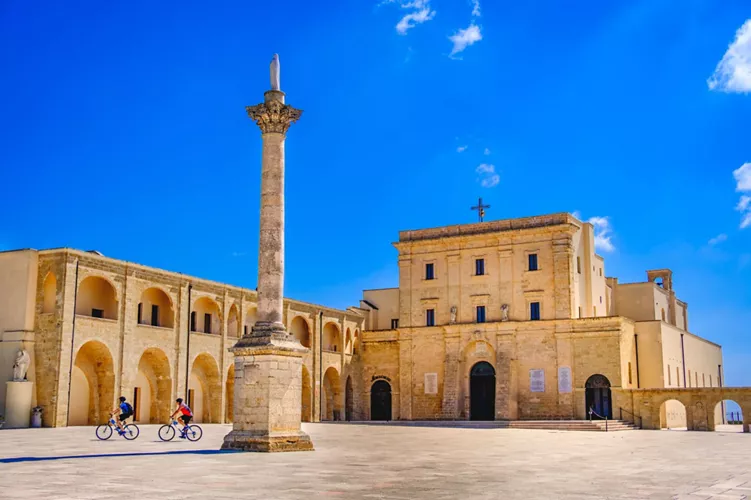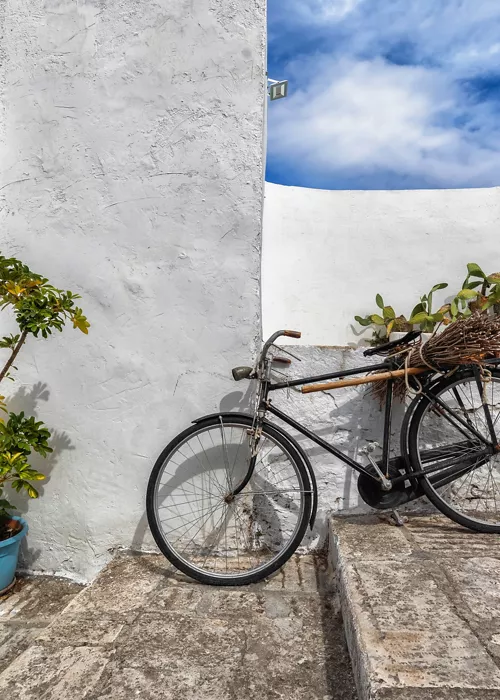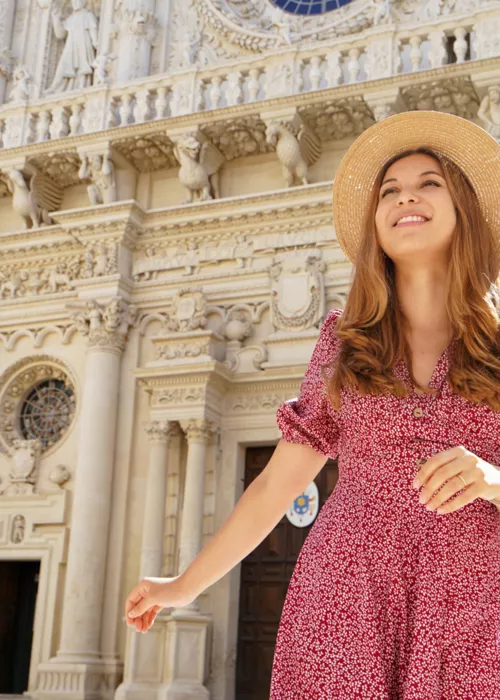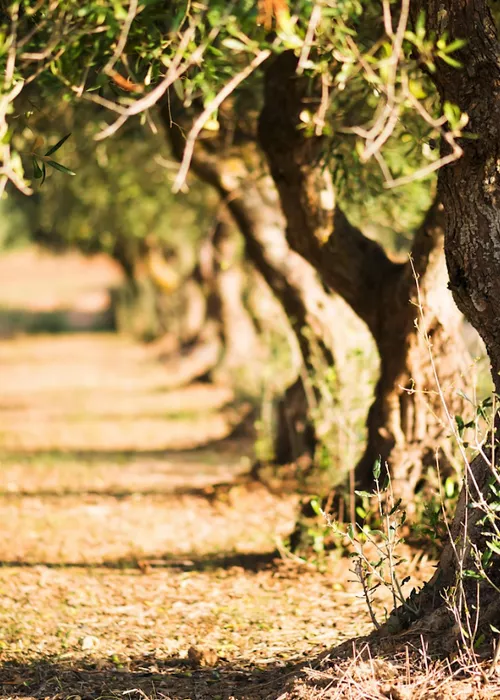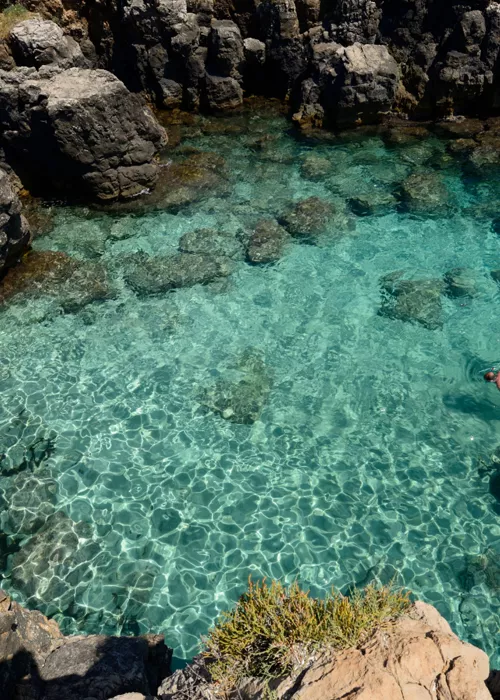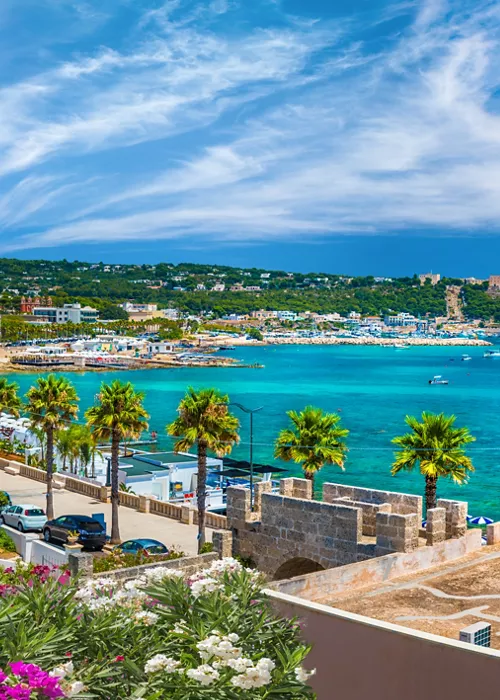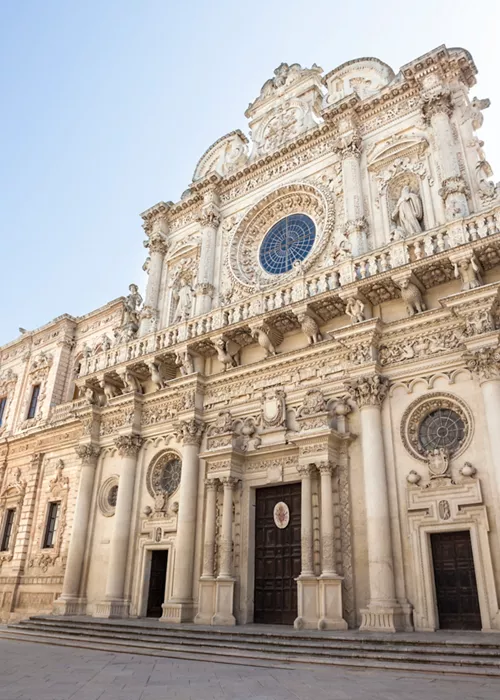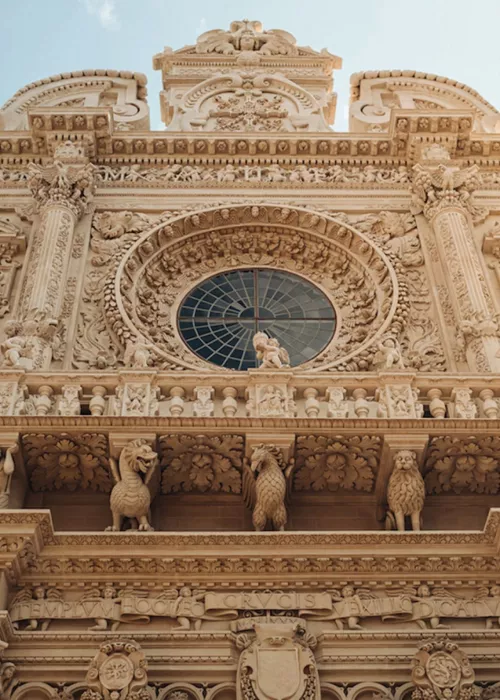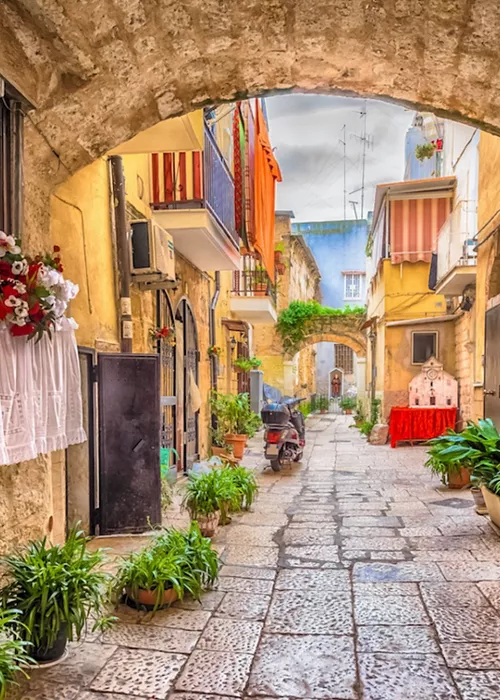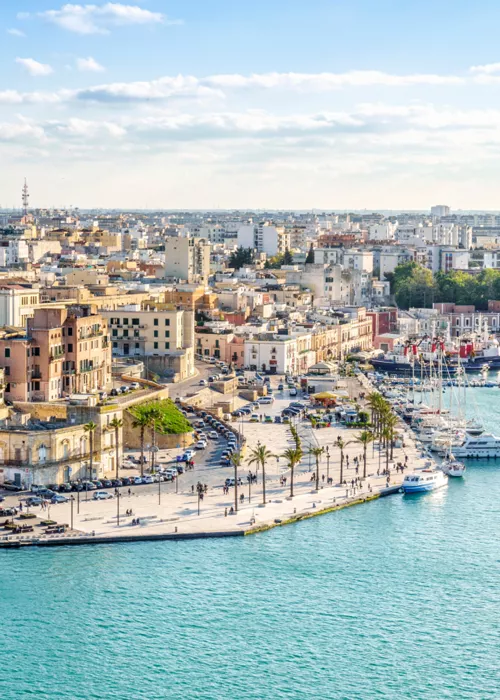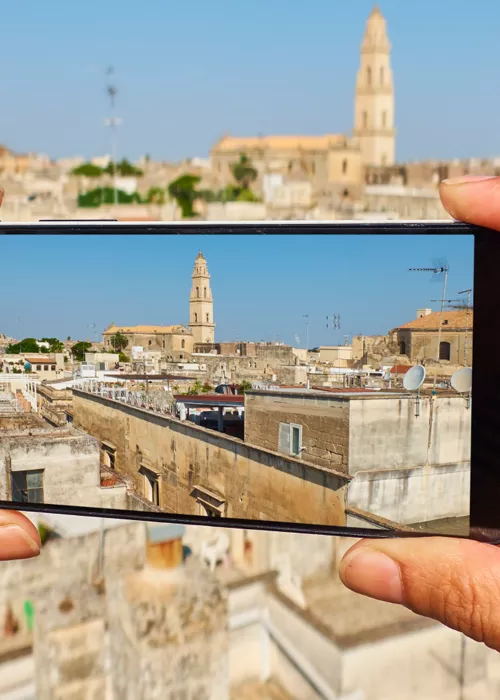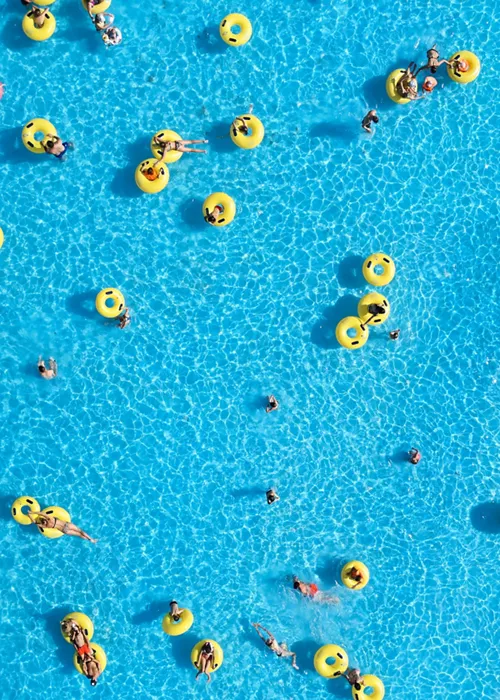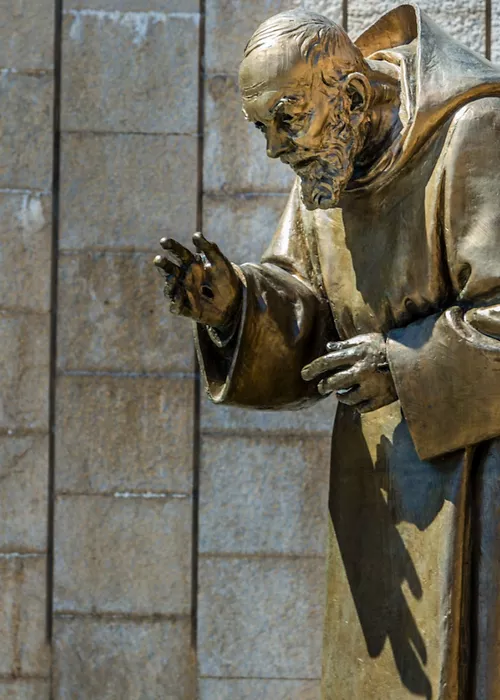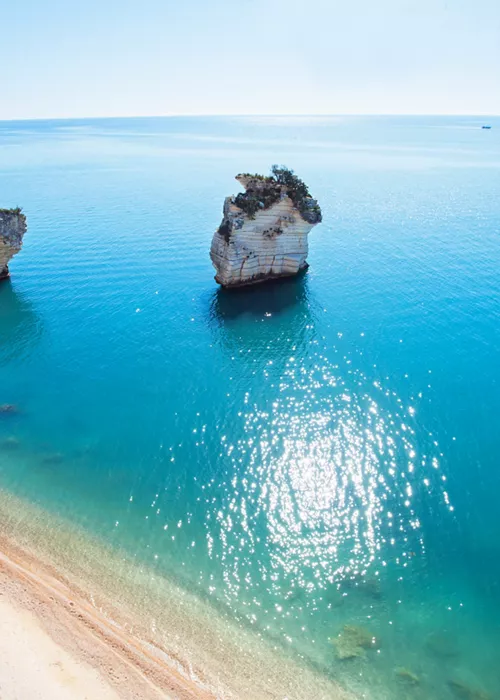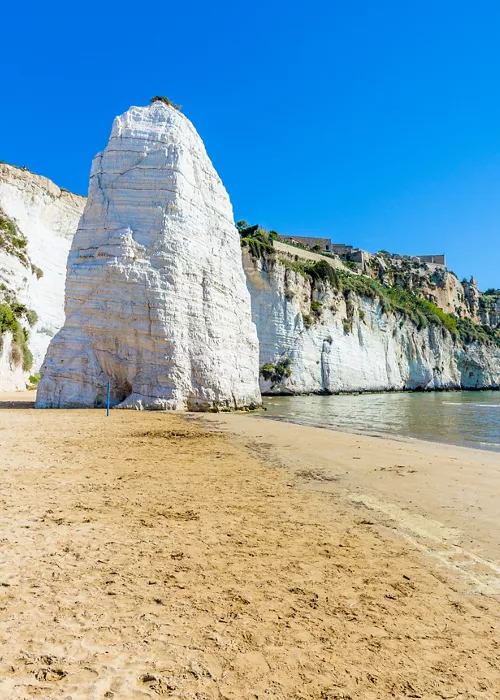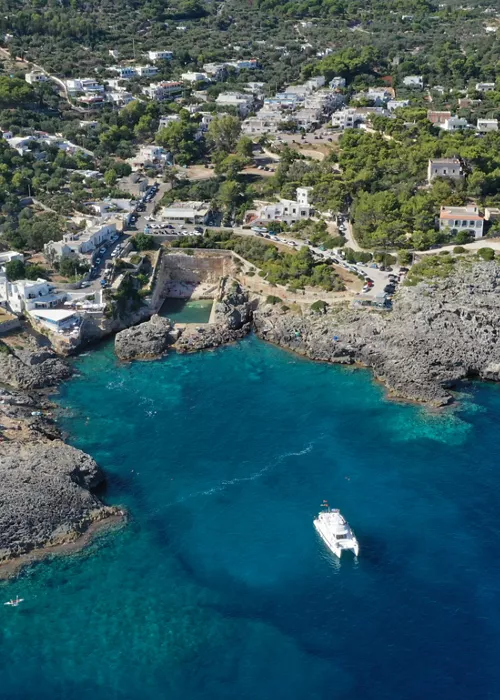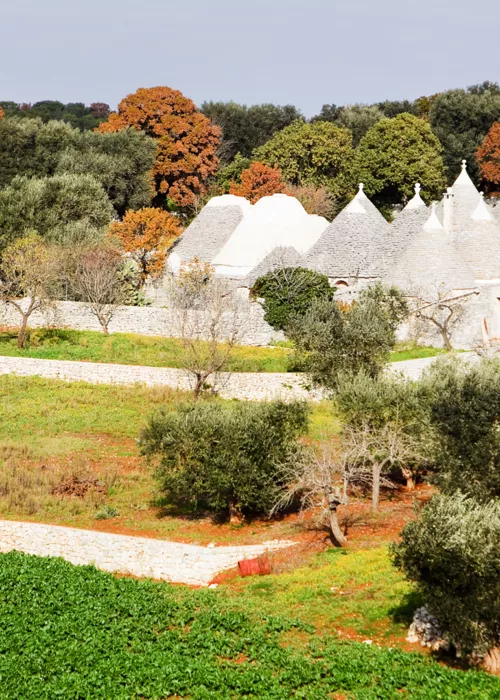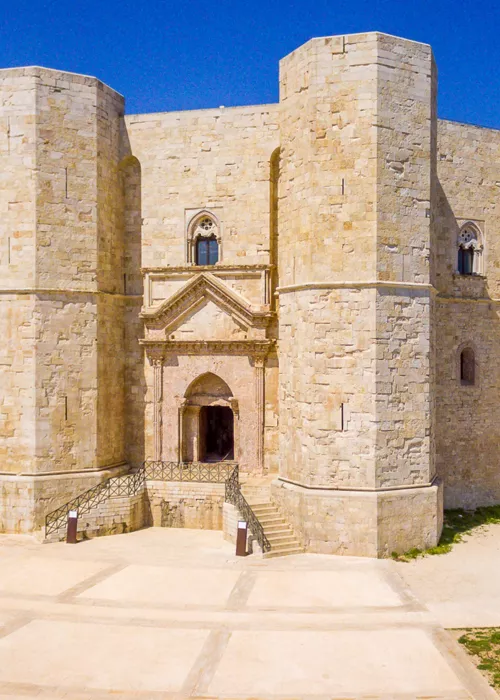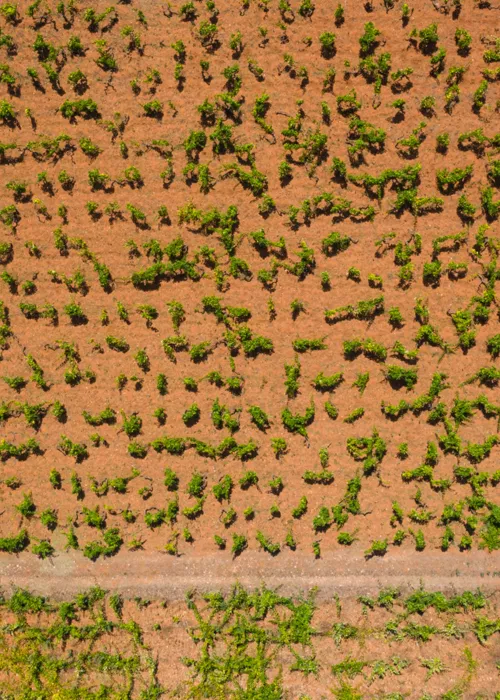Santa Maria De Finibus Terrae in East Italy
The Sanctuary of Santa Maria De Finibus Terrae stands where that last strip of Italy borders the sea.
We are in Santa Maria di Leuca (LE), the very tip of Italy’s heel, a borderland that has always been consecrated to the divine. The church standing on the remains of a temple dedicated to Minerva overlooks the beautiful rocky cape from which the islands of Greece can be glimpsed on the horizon, a prelude to an Orient that seems so close from here.
Are you ready to peer out at the infinite?
Get ready, because the sanctuary of Santa Maria di Leuca is full of charm: like all geographical extremes, it represents a threshold not only with the open sea, but with the unknown and the infinite. The Cape of Leuca was full of pilgrims’ ships travelling to the Holy Land and leaving Italy from here.
The current appearance of the sanctuary dates back to 1720, with its sober Carparo (or Lecce stone) façade and bronze doors made for the Jubilee of 2000 by the sculptor Armando Marrocco. At the entrance on the right, a monolithic boulder reminds us that a pagan temple once stood here, before the people converted to Christianity as early as the 1st century and built a church, which was destroyed following Diocletian's edict and the persecution of Christians, and then rebuilt and destroyed again first by the Saracens and then by the Turks, and lastly rebuilt.
The interior is in the shape of a Latin cross with Baroque decorations, such as the remarkable pulpit carved in Lecce stone and papier-mâché statues, like all the statues in Salento. On the high altar, the painting of Madonna is by the Venetian painter Giacomo Palma il Giovane (1544-1628). The sanctuary houses pilgrims in the Maris Stella holiday house and guesthouse: the rooms are basic, but the location is the most enviable in Apulia!
The sacred complex also includes the Vito Mele Contemporary Art Museum, with sculptures and paintings by local and renowned artists (from Vincenzo Gemito to Medardo Rosso, from Arnaldo and Giò Pomodoro to Ugo Nespolo).
What to see around Santa Maria De Finibus Terrae
In front of the Basilica, beyond the large square with the Baroque Marian column (1694), stands the Leuca lighthouse. Built in 1866, it is 47 metres tall, but when seen from the sea it is more than 100 metres high, quite conspicuous for any vessel heading to or from the East.
The monumental staircase and waterfall, an August spectacle
A monumental Way of the Cross winds through the green pine forest of Capo di Leuca, with 15 sculptural groups created in 2001 by Lecce artist Antonio Miglietta. This place is even more fascinating thanks to the monumental staircase with a waterfall 120 metres high, built in 1939 to celebrate the construction of the Apulian Aqueduct. Distributed throughout the region after one of the most important public works of the early 20th century, the water reaches the finis terrae and is symbolically returned to the sea. The waterfall’s opening is an exciting spectacle reserved for rare occasions: only in August, the waterfall is turned on once a week.
The eclectic villas of Santa Maria di Leuca
Admire the beautiful late 19th-century eclectic villas on the seafront, the holiday homes of Lecce's bourgeoisie full of originality and a desire to amaze. The cobalt-blue pagoda roof of Villa Episcopo, the red towers of the neo-Gothic Mellacqua mansion, the yellow and red striped dome of the unmistakable Villa Meridiana, while Villa Mariuccia has Egyptian-style decorations and Villa Daniele is decidedly Moorish.
They take us back to the time when the pleasures of holiday resorts were new, but also when a sense of modesty obliged ladies to bathe in "bagnarole": tubs hidden in the pavilions on the beach in the same colours as the villas.
Excursions to the Capo caves depart from the Leuca port: remember that the eastern ones are best visited in the morning light, the western ones at sunset.



